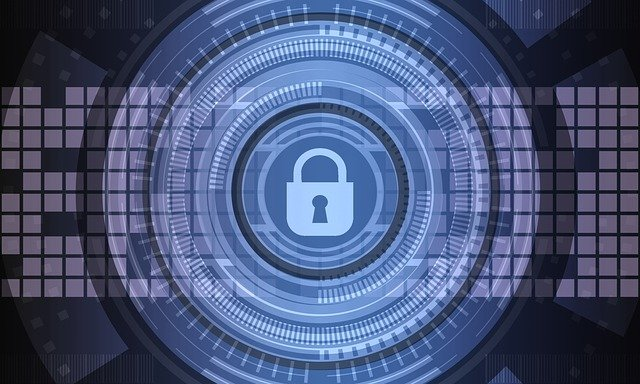Cybercrime is costing businesses around the world billions of dollars each year. And, as we become increasingly reliant on technology, the threat of cyber-attacks only grows. To protect your business from these threats, you need a cyber security maturity model in place.
A maturity model can help you identify where your organization is vulnerable and what steps you need to take to improve your cybersecurity posture through information security processes. Not sure where to start?
Here’s a look at how a cyber security maturity model can help protect your business.
What is a Cyber Security Maturity Model?

A cybersecurity maturity model is a tool used to assess an organization’s cybersecurity readiness and identify gaps in its security posture. The maturity model can be used to benchmark an organization’s cybersecurity program against peers, understand where they fall on the security spectrum, and develop a roadmap for improvement.
There are many different cybersecurity maturity models, but they all generally include five key stages: Awareness, Prevention, Detection, Response, and Recovery. Each stage represents a higher level of cybersecurity sophistication and capability.
By assessing where they fall on the maturity model, organizations can identify areas where they need to improve their cybersecurity posture.
By implementing the appropriate controls and measures at each stage, organizations can work towards achieving a higher level of cybersecurity maturity.
Cyber Defense Maturity Assessment (CDMA)
The Cyber Defense Maturity Assessment (CDMA) is a methodology for assessing an organization’s readiness to defend against cyber threats. It is designed to provide insight into an organization’s current state of cyber defense and identify gaps that may leave the organization vulnerable to attack. The CDMA can be used by organizations of all sizes and in all industries to improve their cyber defense posture.
What are the Five Stages of Security Maturity?

The five stages of security maturity are Awareness, Prevention, Detection, Response, and Recovery.
Awareness:
The first stage of security maturity is Awareness. At this stage, organizations should have a basic understanding of cybersecurity risks and be aware of the potential consequences of a cyberattack. They should also have policies and procedures in place to mitigate these risks.
Prevention:
The second stage of security maturity is Prevention. Organizations should have implemented controls and measures to prevent cyberattacks at this stage. These may include firewalls, intrusion detection systems, and malware protection.
Detection:
The third stage of security maturity is Detection. Organizations should have implemented controls and measures to detect cyberattacks at this stage. These may include intrusion detection systems, log management, and security event monitoring.
Response:
The fourth stage of security maturity is Response. At this stage, organizations should have a plan in place to respond to a cyberattack. This plan should include steps for containment, eradication, and recovery.
Recovery:
The fifth stage of security maturity is Recovery. At this stage, organizations should have a plan in place to recover from a cyberattack. This plan should include steps for data backup and restoration, system recovery, and business continuity.
Benefits of a Cyber Security Maturity Model
There are many benefits of using a cyber security maturity model, including:
- Helps organizations assess their cybersecurity readiness
- Helps identify gaps in an organization’s security posture
- Provides a roadmap for improvement
- Helps benchmark an organization’s cybersecurity program against peers
- Helps understand where an organization falls on the security spectrum
A cyber security maturity model can help protect your business by identifying gaps in your security posture and providing a roadmap for improvement. By implementing the appropriate controls and measures at each stage of the maturity model, you can work towards achieving a higher level of cybersecurity maturity.
Cybriant recommends the NIST CSF framework.
NIST Cybersecurity Framework

The National Institute of Standards and Technology (NIST) Cybersecurity Framework is a maturity model that can be used to assess an organization’s cybersecurity readiness. The framework includes five key functions: Identify, Protect, Detect, Respond, and Recover.
Each function represents a different stage of the security maturity model, and each has a set of associated controls and measures. By assessing where they fall on the maturity model, organizations can identify areas where they need to improve their cybersecurity posture.
The NIST Cybersecurity Framework can help protect your business by identifying gaps in your security posture and providing a roadmap for improvement. By implementing the appropriate controls and measures at each stage of the maturity model, you can work towards achieving a higher level of cybersecurity maturity.
ISO 27001

ISO 27001 is an international standard that guides how to implement an information security management system (ISMS). The standard includes a set of controls and measures that organizations can use to protect their information assets.
Organizations that implement ISO 27001 can use it to assess their cybersecurity readiness and identify gaps in their security posture. By implementing the appropriate controls and measures at each stage of the maturity model, you can work towards achieving a higher level of cybersecurity maturity.
CERT Resilience Model

The CERT Resilience Management Model (CERT-RMM) is a maturity model that can be used to assess an organization’s cybersecurity readiness. The model includes eight key functions: Plan, Identify, Protect, Detect, Respond, Recover, Adapt, and Transfer.
Each function represents a different stage of the security maturity model, and each has a set of associated controls and measures. By assessing where they fall on the maturity model, organizations can identify areas where they need to improve their cybersecurity posture.
The CERT Resilience Model can help protect your business by identifying gaps in your security posture and providing a roadmap for improvement. By implementing the appropriate controls and measures at each stage of the maturity model, you can work towards achieving a higher level of cybersecurity maturity.
What is controlled unclassified information (CUI)?

Controlled Unclassified Information (CUI) is a category of information that requires safeguarding or dissemination controls to and consistent with applicable law, regulations, and government-wide policies. CUI includes information that may cause damage to national security if disclosed without authorization, such as classified information.
Organizations that handle CUI must implement appropriate security controls to protect the information from unauthorized disclosure. The NIST 800-171 standard provides guidance on how to implement security controls for CUI.
The CERT Resilience Model can help protect your business by identifying gaps in your security posture and providing a roadmap for improvement. By implementing the appropriate controls and measures at each stage of the maturity model, you can work towards achieving a higher level of cybersecurity maturity.
What is the Cybersecurity Maturity Model Certification (CMMC)?
The Cybersecurity Maturity Model Certification (CMMC) is a program that certifies organizations that meet certain cybersecurity standards typically for government contractors in the DOD supply chain. The CMMC includes 17 domains: Access Control, Asset Management, Awareness and Training, Audit and Accountability, Configuration Management, Identification and Authentication, Incident Response, Maintenance, Media Protection, Physical Protection, Recovery, Risk Management, Security Assessment, Situational Awareness, System and Communications Protection, and System and Information Integrity.

CMMC Accreditation Agency
The CMMC Accreditation Body (CMMC-AB) is a nonprofit organization that accredits organizations that provide CMMC assessments. The CMMC-AB is responsible for ensuring that assessors meet the requirements for accreditation and that they follow the CMMC assessment procedures.
The CMMC-AB guides assessors and organizations on the CMMC certification process. The CMMC-AB also manages the CMMC credentialing program, which provides credentials to assessors who have been accredited by the CMMC-AB.
The CMMC Accreditation Body can help protect your business by identifying gaps in your security posture and providing a roadmap for improvement. By implementing the appropriate controls and measures at each stage of the CMMC, you can work towards achieving a higher level of cybersecurity maturity.
What is an Information Security Management System (ISMS)?

An Information Security Management System (ISMS) is a framework that helps organizations manage their information security. The ISMS includes policies, procedures, and controls that are designed to protect an organization’s information assets.
Organizations should implement an ISMS that meets their specific needs. The ISMS should be tailored to the organization’s size, industry, and risk profile.
The CERT Resilience Model can help protect your business by identifying gaps in your security posture and providing a roadmap for improvement. By implementing the appropriate controls and measures at each stage of the maturity model, you can work towards achieving a higher level of cybersecurity maturity.
Security Incident Management Maturity Model
Security incident management maturity is critical for any organization looking to protect itself from cyber security threats. The NIST CSF Maturity Levels are an important framework for understanding what types of processes, procedures, and strategies are needed to effectively manage security incidents. This framework identifies five core areas that an organization should focus on to identify potential risks and respond when a breach occurs.
These areas include detection, response, containment, recovery, and lessons learned. In order to stay ahead of cyber security threats, organizations need to continuously monitor their incident management maturity level in relation to the NIST CSF levels and take steps to enhance their system as needed.
Cyber Security Incident Response Maturity Assessment
Cybersecurity incident response is a critical component of managed security services. An effective maturity assessment enables organizations to properly identify and address vulnerabilities within their infrastructure. It provides insight into the current environment, allowing organizations to prioritize resources based on risk, focus energy on prevention strategies, and establish optimized processes for responding to incidents in a timely manner.
Ultimately, an effective maturity assessment helps to make sure organizations are taking appropriate steps when it comes to cyber security incident response and managed security services.
Cloud Security Maturity Model
A cloud security maturity model is a tool used to assess and improve the security of cloud-based systems. It can help organizations identify where they are in terms of their cloud security posture, and determine the steps necessary to improve their security. Many different models are available, each with its own strengths and weaknesses. It is important to choose a model that is relevant to your organization’s specific needs.
Website Security Maturity Assessments
One example of a website security maturity assessment is the Cloud Security Alliance’s Cloud Security Maturity Model. This model helps organizations assess their current security posture and identify areas where they can improve. It includes a number of different security domains, such as governance, risk management, and data protection.
How to Begin Using a Cyber Security Maturity Model?
If you’re looking to start using a cyber security maturity model in your business, there are a few things you need to do.
1. Assess your organization’s current cybersecurity posture.
To determine where your organization falls on the security spectrum, you need to assess its cybersecurity readiness. This can be done by assessing your organization’s vulnerability to cyberattacks and understanding its ability to respond to and recover from incidents.
2. Choose a cybersecurity maturity model.
There are many different cybersecurity maturity models available, so it’s important to choose one that is relevant to your business. The NIST Cybersecurity Framework is a good option for organizations in the United States, while the ISO 27001 standard is a good option for organizations in other countries.
3. Implement the appropriate controls and measures.
Once you have chosen a maturity model, you need to implement the appropriate controls and measures at each stage. This will help improve your organization’s cybersecurity posture and protect it from cyberattacks.
4. Monitor and assess your progress.
It’s important to monitor and assess your organization’s progress as you work towards improving its cybersecurity posture. This will help you identify any areas where additional improvement is needed.
5. Make changes as necessary.
As your organization’s cybersecurity posture changes, you may need to make changes to the controls and measures you have in place. This will ensure that your organization remains protected from cyberattacks.
A cyber security maturity model can help organizations assess their cybersecurity readiness, identify gaps in their cybersecurity posture, and develop a roadmap for improvement. By implementing the appropriate controls and measures at each stage, organizations can work towards achieving a higher level of cybersecurity maturity.
SIEM Maturity Model
The siem maturity model is a framework for assessing and improving the security of information systems. It provides a five-level framework for measuring the security of an organization’s information systems, from initial implementation to fully mature. The model can help organizations identify areas where they need to improve their security, and it can also serve as a roadmap for improving security.
The siem maturity model has five levels:
Level 1: Initial Implementation
Level 2: Ad hoc
Level 3: Managed
Level 4: Measured and Optimized
Level 5: Fully Integrated and Automated
Organizations should strive to reach level 5, which is the highest level of security. To reach this level, organizations must have a comprehensive security program that is integrated into all aspects of their business. They must also have mature processes and technologies in place to manage and monitor their security posture.
Web Security Maturity Assessments
A web security maturity assessment is an evaluation of an organization’s web security posture and its ability to protect against various threats. The assessment can help identify areas where the organization could improve its security posture and prevent or mitigate potential attacks.
Organizations should consider conducting a web security maturity assessment if they have not done so already. The assessment can help identify gaps in an organization’s web security defenses and provide guidance on how to improve them. Furthermore, the results of the assessment can be used to benchmark an organization’s progress over time and compare its performance against other organizations.
Application Security Maturity Model
Application security is the process of identifying, assessing, and mitigating risks to software applications. The goal of application security is to protect applications from attacks that could exploit vulnerabilities and jeopardize data confidentiality, integrity, or availability.
There are a number of different models for measuring application security maturity, but one of the most commonly used is the Open Web Application Security Project (OWASP) maturity model. This model has five levels, ranging from Level 1 (initial/ad-hoc) to Level 5 (optimized).
Level 1: Initial/Ad-Hoc
At this level, security is usually an afterthought, and there is little to no formalized process for managing security risks. Applications are typically developed quickly and with little regard for security.
Level 2: Repeatable/Embedded
Security is beginning to be treated as a first-class concern, and there is some level of formalization around the process of managing security risks. However, this formalization is typically ad-hoc and not well-integrated into the overall software development process.
Level 3: Defined/Incorporated
Security is now well-defined and formalized part of the software development process. Risks are identified, assessed, and mitigated throughout the application lifecycle.
Level 4: Managed/Measured
Security risks are continuously managed and measured throughout the application lifecycle.
Level 5: Optimized
Security is continuously optimized and improved based on data and feedback from application security testing and monitoring.
The OWASP maturity model is a good starting point for assessing the security of your applications, but it is important to remember that application security is an ongoing process, not a static goal. As threats and vulnerabilities evolve, so too must your application security program.
Application Security Posture Phase
The Application Security Posture Phase is a critical step in any security program. It involves assessing the existing architecture and configuration of an application, identifying any potential weaknesses, and creating a strategy to mitigate these risks. This includes analyzing the code for potential vulnerabilities, running regular scans to detect malicious activity, and implementing measures such as encryption and authentication.
Conclusion
A cyber security maturity model can help protect your business by identifying gaps in your security posture and providing a roadmap for improvement. By implementing the appropriate controls and measures at each stage of the maturity model, you can work towards achieving a higher level of cybersecurity maturity, and reduce your organization’s cyber risk.



